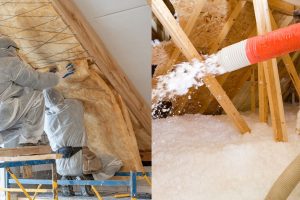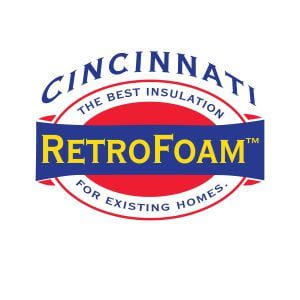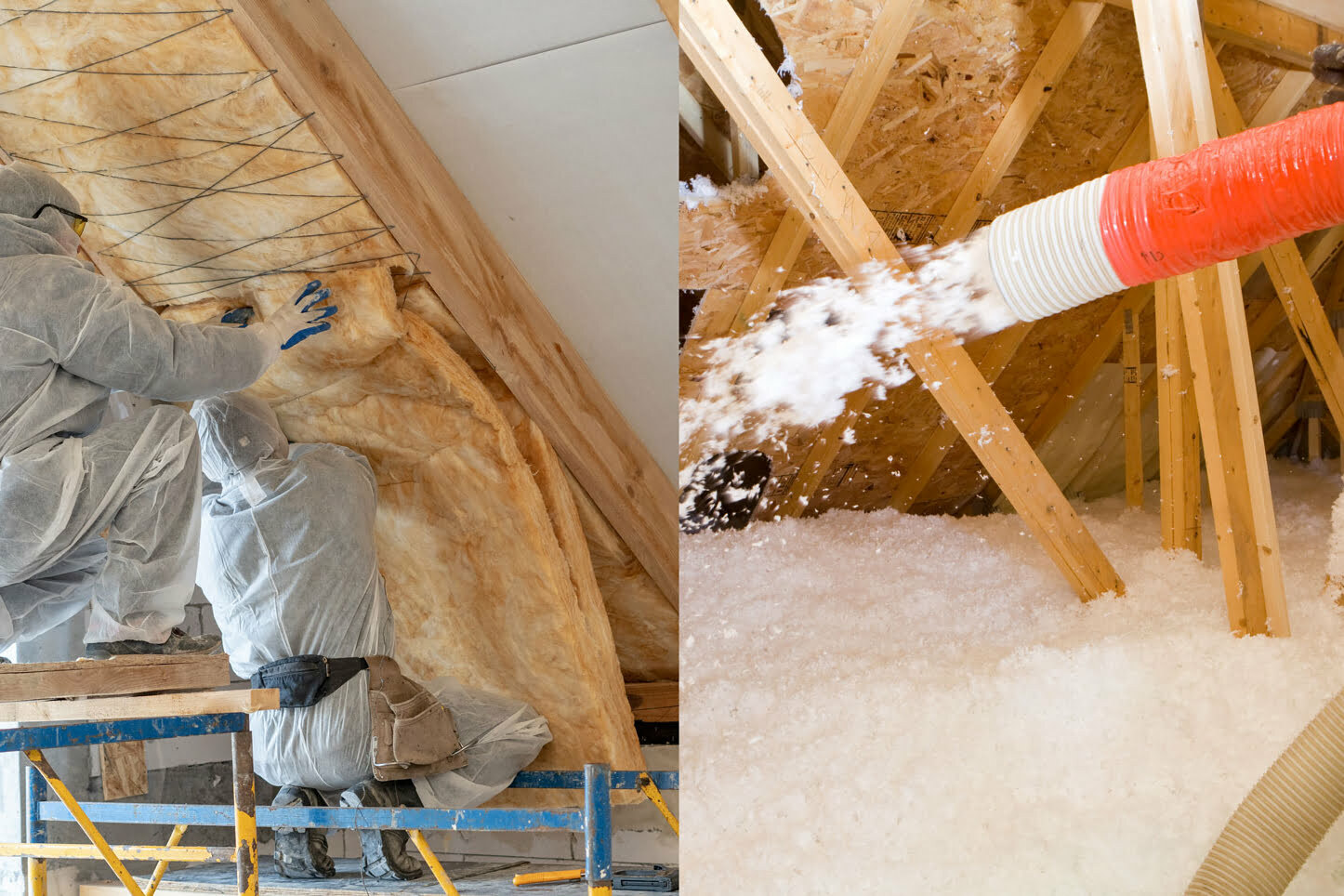 Blown-in or batt and rolls– how do you choose? Homeowners often struggle deciding which one is best suited to their home as they make changes to their property. Are you considering adding more insulation to your home? If so, your search has led you right where you need to be. It can be a little confusing trying to decide which type of insulation is the right choice for your property. One of the most important decisions to make is whether you are going with batt or blown-in insulation. What’s the difference? And what do you need to consider when making your decision?
Blown-in or batt and rolls– how do you choose? Homeowners often struggle deciding which one is best suited to their home as they make changes to their property. Are you considering adding more insulation to your home? If so, your search has led you right where you need to be. It can be a little confusing trying to decide which type of insulation is the right choice for your property. One of the most important decisions to make is whether you are going with batt or blown-in insulation. What’s the difference? And what do you need to consider when making your decision?
Understanding Home Insulation
Home insulation is crucial in maintaining your living space’s thermal barrier, regulating heat transfer, and ensuring an efficient HVAC system. It prevents air leaks and controls natural ventilation, protecting your home from external temperature changes.
Insulation helps to keep your home warm during winters and cool in summers by resisting heat flow. This thermal performance enhances comfort, minimizes HVAC equipment operation, and leads to superior home improvements.
Different Types of Insulation: Blown-in and Batts
Two commonly used types of insulation are blown-in insulation and batt insulation. Blown-in insulation, also known as blown-in or loose-fill insulation, is a type of insulation material installed by blowing or spraying it into cavities, attics, walls, or other enclosed spaces using specialized equipment. This insulation material is typically composed of small particles or fibers that create a thermal barrier to reduce heat transfer, helping to improve a building’s energy efficiency and comfort.
Batt insulation, also known as blanket insulation, is a type of insulation material that comes in pre-cut, rectangular panels or rolls. It is designed for installation in standard-sized wall, ceiling, or floor cavities, making it a popular choice for new construction and retrofitting existing buildings. Batt insulation is made from various materials, including fiberglass, mineral wool, and natural fibers like cotton or sheep’s wool.
Blown-in Insulation: Benefits and Installation
Blown-in insulation is popular for attic and crawl spaces thanks to its superior thermal performance. Some key benefits include:
- Effective Thermal Performance: Blown-in insulation provides good thermal resistance, reducing heat transfer and improving energy efficiency.
- Even Distribution: It fills spaces uniformly, reducing the risk of thermal gaps and maintaining a consistent indoor temperature.
- Reduced Air Infiltration: Blown-in insulation can help minimize drafts and air leakage in a home or building.
- Versatility: It can be used in various spaces, including attics, wall cavities, and floors.
- Soundproofing: Some blown-in insulation materials offer soundproofing benefits, reducing noise transmission.
- Moisture Control: Certain blown-in insulation materials are treated to resist moisture, contributing to a drier and healthier indoor environment.
The Installation Process and Cost of Blown-in Insulation
The blown-in insulation process is typically quick and efficient, considering it accommodates every square foot of a surface. It does require professional installation to ensure it’s properly placed and lasts for years. Costs may vary depending on area size, desired R-value, and labor expenses. For the most accurate estimate, request a free quote from an insulation company.
Batt Insulation Unpacked
Batt insulation is relatively inexpensive and easy to install. It performs well in reducing heat transfer, and it’s fire-resistant. However, batt insulation is subject to inconsistent coverage. Even when installed properly, this insulation may not cover all wall cavities or spots with irregular shapes. This results in thermal bridging, where heat escapes through uninsulated areas. Because many homeowners choose to do DIY batt insulation installation, there is the risk of missing an important step that a professional contractor might not.
Blown-in Insulation vs Batts: A Comparative Analysis
With these characteristics in mind, let’s review key comparisons of batts vs. blown-in insulation.
Blown-in Insulation
- Installation Method: Blown-in insulation is installed by blowing or spraying loose insulation material into cavities or spaces using specialized equipment. This method allows for even distribution and is particularly well-suited for filling irregularly shaped spaces, such as attics or wall cavities.
- Coverage: Blown-in insulation provides excellent coverage and can effectively fill voids, gaps, and hard-to-reach areas. It minimizes air infiltration, which can improve energy efficiency.
- Seamless Installation: Blown-in insulation is often installed with minimal disruption to existing structures, as it can be added through small access holes. This makes it suitable for retrofitting existing homes.
- Energy Efficiency: Due to its ability to provide consistent coverage and fill gaps, blown-in insulation can offer excellent thermal performance and energy savings.
- Soundproofing: Blown-in insulation can have good acoustic properties, helping to reduce sound transmission between rooms or from outside.
- Moisture Resistance: Some blown-in insulation materials have moisture-resistant properties, adding an extra layer of protection against water infiltration.
Batt Insulation
- Installation Method: Batt insulation comes in pre-cut, rectangular panels or rolls. It’s typically installed by placing these batts between studs, joists, or rafters.
- DIY Friendly: Batt insulation is well-suited for DIY installation, allowing homeowners to handle the installation themselves if they have the necessary skills and tools.
- R-Value Variability: Achieving the desired R-value with batt insulation may require careful installation to ensure no gaps, voids, or compression of the material, as this can impact its effectiveness.
- Less Effective for Irregular Spaces: Batt insulation may not perform well in irregularly shaped or hard-to-reach spaces, such as attics with obstructions or wall cavities with obstacles.
- Air Sealing: Proper air sealing is crucial when using batt insulation to prevent drafts and ensure optimal performance.
Making the Right Choice
Assessing Your Insulation Needs
Before you decide on the insulation type, it’s crucial to understand your current situation. Do your exterior walls feel cold during the winter? Are there dark spots on your ceiling that could suggest air leaks or insufficient insulation? Maybe you’ve noticed a considerable increase in HVAC equipment usage. All of these could indicate you need an insulation upgrade. For a thorough assessment, you can contact local insulation contractors for an efficient inspection.
Climate and Home Specifications
Your geographic climate plays a pivotal role in choosing proper insulation. If you live in a colder climate, spray foam insulation is an effective option for preventing heat transfer. Building details such as the size of your attic space or crawl spaces also play a pivotal role. For example, an irregularly shaped or hard-to-reach area is the perfect opportunity to use blown-in insulation because it’s highly effective in filling those areas.
Professional Advice for Decision-Making
Being informed is important, but an expert opinion is equally essential. To make the best choice for your insulation needs, it’s best to connect with professional installers who can assess your space and make the proper recommendation.
Why to Use Blown-in Insulation…
- Energy Efficiency – Most homes are supposed to have an R-49 R-Value, that’s about 18.5 inches of blown-in insulation in their attic.
- Noise Reduction – It is better at minimizing day-to-day noise both inside and outside of your home.
- Fits Any Space – Blown insulation also will fit any space.

Look to Cincinnati RetroFoam for Your Insulation Needs
If you’re looking for professional insulation or recommendations for your home, Cincinnati RetroFoam is here to help. Since 2015, we’ve offered premium insulation to homeowners that isn’t available anywhere else. Our mission is to provide impeccable service and give our best at every job to give you lasting comfort and long-term savings.
We offer a range of insulation services, including blown-in insulation, injection foam, and spray foam. We work on existing homes, new construction, pole barns, and commercial properties. Whatever your insulation needs are, we’re here for you. We also offer financing options if you’re looking for ways to manage insulation costs. Let us serve as your trusted partner for your upcoming insulation project.
Contact Us (513-771-3626) for More Information -or- Get a Quote!

